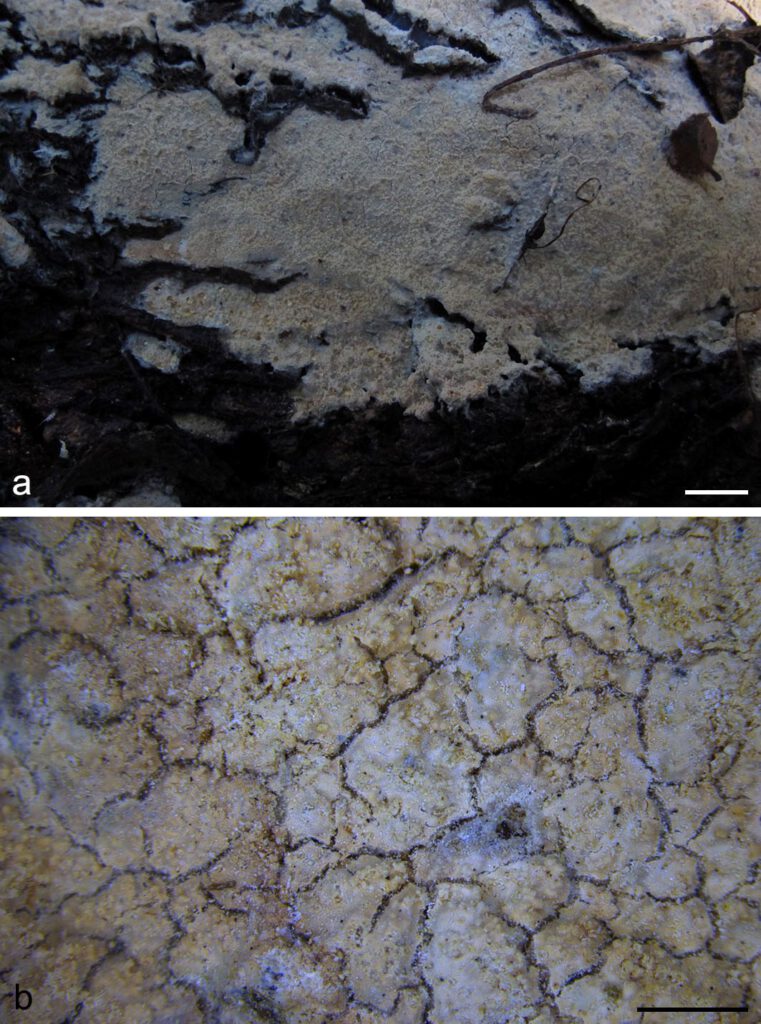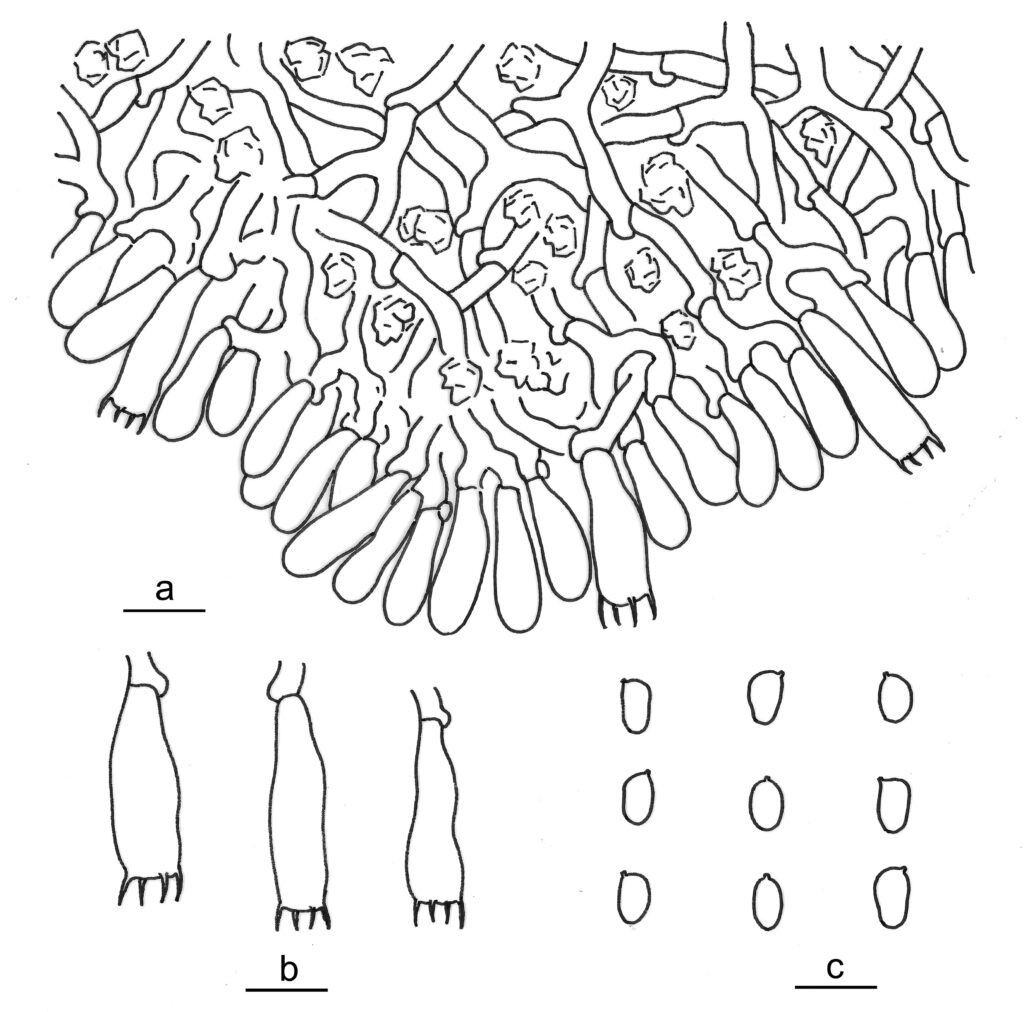Allotrechispora gatesiae L.W. Zhou, S.L. Liu & T.W. May.
MycoBank number: MB 559879; Index Fungorum number: IF 559879; Facesoffungi number: FoF 12859;
Description
Basidiomes annual, resupinate, effused, thin, soft, loosely attached to the substrates. Hymenophore tuberculate, straw-yellow when fresh, straw-yellow to cinnamon-buff, cracked with age. Margin thinning out, fimbriate, slightly paler than hymenophore surface, becoming indistinct with age. Hyphal system monomitic; generative hyphae with clamp connections, hyaline, thin-walled, frequently branched and septate, loosely interwoven, 2–3 µm in diam. Cystidia absent. Basidia cylindrical, hyaline, thin-walled, with four sterigmata and a basal clamp connection, 20–27 × 6–8 µm; basidioles in shape similar to basidia, but slightly smaller. Basidiospores oblong ellipsoid to ellipsoid, hyaline, thin-walled, smooth, inamyloid, indextrinoid, acyanophilous, (5–)5.2–6.8(–7) × (3.7–)3.8–4.3(–5) µm, L = 6.0 µm, W = 4.1 µm, Q = 1.4–1.5 (n = 60/2).
Material examined: AUSTRALIA, Tasmania, Tahune Adventures, The Look-in Look-out, on fallen trunk of Atherosperma moschatum, 15 May 2018, L.W. Zhou, LWZ 20180515-18 (holotype in MEL, isotype in HMAS).
Distribution: AUSTRALIA
Notes: As far as macromorphology, Allotrechispora gatesiae is distinct from other species in this genus by its colored basidiomes. The basidiospores in A. gatesiae are larger than those in A. daweishanensis (3.8–5 × 2.7–3.5 µm; Zong et al. 2021: as Trechispora). In comparison to Allotrechispora gatesiae, basidiospores are overlapping in size in A. xantha (4.3–5.7 × 3.2–4 µm; transferred from Trechispora xantha below), but this species has a lower length to width ratio of basidiospores (1.32–1.41; Zong et al. 2021: as Trechispora).

Fig. 1. Basidiomes of Allotrechispora gatesiae (LWZ 20180515-18, holotype). — Scale bars: a = 1 cm; b = 2 mm.

Fig. 2. Microscopic structures of Allotrechispora gatesiae (drawn from the holotype). a. Vertical section of basidiomes; b. Basidia; c. Basidiospores. — Scale bar = 10 μm.
